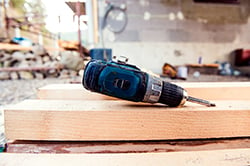In a previous article I touched on how researchers are working on making coal-ash a green building material of the future. But there are other exciting developments in the green construction movement.
Both construction firms and home-buyers are reaping substantial rewards. It’s been well-documented that many buyers attach a higher price-point to green homes.
According to a report from Dodge Data & Analytics and the National Association of Home Builders, one-third of the builders who responded said green building represents more than 60% of their activity.
Sustainably-Sourced Wood
A 2008 law banned the import of illegally-sourced timber into the United States. Unfortunately, unscrupulous importers still manage to sneak illegally-sourced wood into the country. So builders must take extra steps to ensure that the wood they use for their green projects is sustainable.
Using reclaimed or salvaged wood is an attractive option for builders who want to market their projects as low-emission.
The Woodlawn development in northeast Portland used locally-sourced wood when building its 18 units. Contractors used reclaimed barn wood for the exterior siding, and framed the units with timber from trees killed by a beetle infestation in Colorado.
Green Construction From Green Plants

Fiberglass insulation isn’t the only option anymore. Green materials made from shredded denim, hemp, flax, and soybeans are all options that not only can save building owners money, but also help the environment.
But what if the walls themselves were also made of plant material? Mycoform technology makes it possible.
Mycoform technology involves growing building materials using mycelium, a fungal spore. The fungal spore feeds off a waste material inside a mold until it fills up the space. Manufacturers then heat-treat it to kill the spore, leaving behind a strong brick, or other shape. This technology is still in the experimental stages, but some manufacturers are currently using it for packaging.
Cool Roofing
Mounting solar panels to generate electricity isn’t the only green way to use a roof. When properly designed, roofs can cool a structure in warm climates.
Cool roofs are typically white or light colored, and treated with a highly-reflective coating or membrane to reflect the sun’s heat. Changing the slope of the roof can control its ability to cool, as well.
Excel Power, the fourth largest utility company in the United States, has awarded rebates for cool roofing systems in Minnesota. And in 1995, Georgia became the first state to include cool roofing guidelines in its building codes. Since then, other jurisdictions have added similar codes, as has the federal government.
Culture Shift
But while some jurisdictions are mandating certain aspects of green building, the good news is that it isn’t always necessary. Many contractors are passionate about the green building movement, and are choosing on their own to make eco-friendly practices part of their business.
“It’s more of a culture. It’s a mindset,” said Chad Dorgan, the vice president of quality and sustainability at McCarthy Building Companies. “For any project, we look at it from a green operations perspective.”
Source: ConstructionDive.com, NRDC.org, RealRstateTechNews.com, HowStuffWorks(1).com, Howstuffworks(2).com, GreenBuildingSolutions.org, AnalyticsStore.com, MonsterGreenBuilding.com

“Helping our clients get jobs done since 1998.”